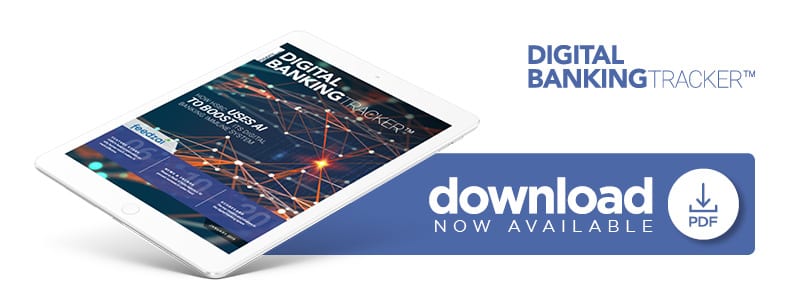How HSBC Uses AI To Boost Its Digital Banking Immune System

What good is an AI-powered insight if core banking systems do not know how to act on it in real time? In the new Digital Banking Tracker, Jeremy Balkin, HSBC’s head of innovation, explains how a combination of AI and human insights can boost a bank’s “internal immune system.”
Banks must have constant insight into potentially suspicious activities to stay ahead of fraudsters. Many financial institutions are achieving this state of vigilance by investing in artificial intelligence (AI) and machine learning (ML) solutions as part of their anti-fraud efforts.
These solutions can be implemented to review expansive volumes of bank transactions and data points to help banks detect questionable activities and broader patterns of potential fraud. But as Jeremy Balkin, head of innovation for Swiss bank HSBC, recently told PYMNTS, even AI and ML need assistance sometimes — from humans.
Balkin explained how AI and ML solutions are taking the fight against fraud to every level of a bank — from the risk analysis experts on the FI’s end to tellers on the front end — and how these solutions are made more effective when humans confirm and clarify the returned insights.
“When you find actionable insights, how do you act on them?” Balkin said. “The effectiveness of the technology is limited if you can’t act upon the actionable insights that the technology articulates for you.”
Searching For A Financial Fraud Needle In A Haystack
While AI and ML solutions are providing banks with valuable help in reviewing data to detect suspicious activities, FIs still need to be able to quickly react to the insights. HSBC recently invested in a new core banking system that readily responds to AI-driven discoveries. The goal is to make the bank’s core system responsive to the actions that the AI solution recommends. Balkin compared this internal communication between different bank systems to the human body’s immune system and how it immediately responds to a problem.
“[Having] this connectivity for these various technologies [is like having] all the organs of a body talking to each other with an immune system that understands what is going on,” he said.
Many banks, HSBC included, are also using AI to stay compliant with new regulations and anti-money laundering (AML) rules. This means FIs must review large quantities of data across their networks to ensure that those using their banking systems are trustworthy and in line with financial regulations. As such, AI and ML tools have quickly become crucial to determining if suspicious activity is being perpetuated, sparing employees from manually reviewing troves of data.
“You have billions and, in some cases, trillions of transactions across global networks,” Balkin said. “Finding a needle in a haystack, as it were, is done most effectively using the power of AI to look through massive data sets.”
In other words, AI and ML solutions could provide banks with the tools they need to rapidly protect and heal themselves from potential threats.
Pairing Humans And AI Against Fraud
Despite AI’s potential, Balkin said humans are still very much necessary to keep financial systems safe from fraudsters. People have several roles to play to make AI effective at all levels of an FI, including on the bank end, where they can improve solutions’ performances by confirming if transactions are false-positives or false-negatives.
AI-generated fraud alerts that go directly to customers’ smartphones also put them on the front lines of helping their banks fight fraud.
“The best person to determine whether there was a [fraudulent activity], for example, on a credit card, is the customer,” he said. “Technology like AI can deliver a superior customer experience and a safer customer experience by putting the power literally in the palm of customers’ hands.”
AI-powered fraud alerts can also encourage customers to interact with the systems, demonstrating how the technology is beneficial.
“All of these technologies can be very much in the abstract, [leaving customers to wonder,] ‘What does this mean when the rubber hits the road?’” Balkin said. “It’s important to recognize the link between the two and how the abstract actually has a tangible, positive impact.”
As customers engage with AI-based alerts and help the technologies make more informed and insightful decisions, customers are becoming more aware of how such solutions are benefiting their daily lives. This connection between AI systems and human beings can give banks the tools they need to keep their networks immune from fraudulent activities.

